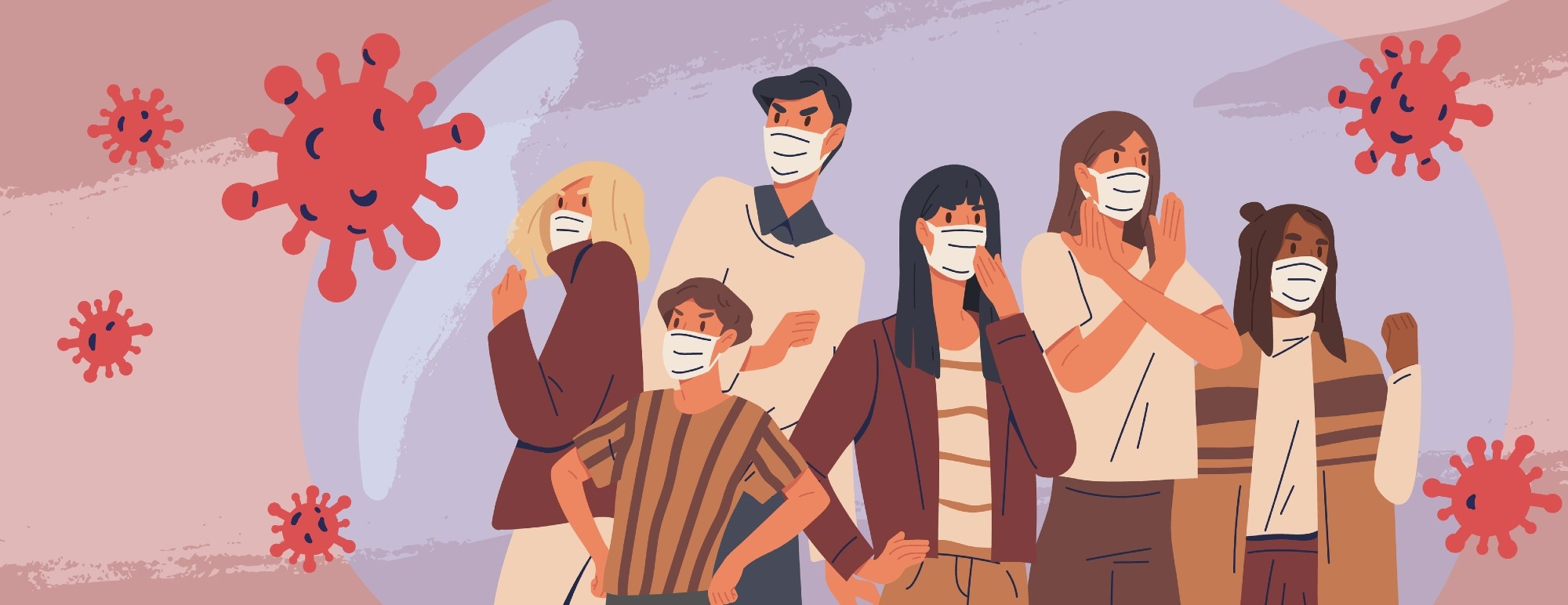Coronavirus disease 2019 (COVID-19) caused by severe acute respiratory syndrome coronavirus 2 (SARSCoV-2) led to over 600 million cases globally and about 2.6 million cases in Sweden by August 2022. COVID-19 severity was reported to impact symptoms. People with mild COVID-19 could often recover at home, while those with critical COVID-19 required hospitalization.
 Study: Long-term self-reported health and disability after COVID-19 in public employees. Image Credit: GoodStudio/Shutterstock
Study: Long-term self-reported health and disability after COVID-19 in public employees. Image Credit: GoodStudio/Shutterstock
A recent meta-analysis indicated that approximately 80% of people experience at least one symptom 14 to 110 days after an acute infection. Sub-acute COVID-19 has been defined as abnormalities and symptoms that appear 4 to 12 weeks post-acute COVID-19. Post-COVID-19 condition is a term introduced by the World Health Organization (WHO) to indicate individuals whose COVID-19 symptoms persist three months post-infection and cannot be explained through alternative diagnosis.
Exposure of people to SARS-CoV-2 is variable. Some occupations require close contact with infected individuals, while others have the option to work from home. Moreover, some occupations are dominated by a specific gender leading to an uneven level of SARS-CoV-2 exposure. Description of health and health-related states takes place by the International Classification of Functioning, Disability, and Health (ICF). However, little is known regarding the long-term health and disability of patients following COVID-19 infection.
A new study in BMC Public Health aimed to analyze long-term health and disability among public employees following mild COVID-19 infection. The study also assessed the association of these factors concerning occupation and gender.
About the study
The study involved the collection of PCR test results of public employees who were tested before November 2020. These individuals were sent a text containing the study website and contact information of the principal investigator. The study website contained a link to a questionnaire, and it followed the Strengthening the Reporting of Observational Studies in Epidemiology (STROBE) reporting guidelines. The study also included individuals who tested PCR-negative as healthy controls.
Assessment of primary outcomes concerning self-reported health and disability using questions about participants' illness during the PCR test and previous comorbidities during the last year. The Swedish version of the 12-item WHODAS 2.0 was used to assess health and disability. Division of the post-acute COVID-19 phase took place into two groups, the sub-acute phase, which ranged from 4 to 12 weeks post-acute COVID-19, and the post-COVID-19 phase, which was more than 12 weeks post-acute COVID-19. Information on the occupation and body mass index was collected from all the participants.
Study findings
The results indicated that the study comprised 10,194 participants whose mean age was 44.9 years and were mostly women. In total, 7185 participants were reported to have a negative PCR test, whereas 1425 had a positive PCR test and were in the sub-acute phase, and 1584 had a positive PCR test and were in the post-COVID-19 phase. Participants in the post-COVID-19 group reported greater disability compared to controls, while those in the sub-acute phase reported greater disability compared to the post-COVID-19 group. The most frequently reported disability item was ‘emotionally affected.’
A higher rate of difficulties for 20 to 30 days was observed for participants in the sub-acute phase compared to the post-COVID-19 phase, which was also similar for comparison between participants in the post-COVID-19 phase and controls. Participants in the post-COVID-19 phase also reported fewer days during which they could participate in normal activities or work more than controls. Women reported having more days of disability and a greater degree of disability than men. 14.1% of men and 25.5% of women in the sub-acute phase, 9.8% of men and 15.8% of women in the post-COVID-19 phase, 6.8% of men and 10.7% of women with negative PCR reported severe total degree of disability.
The results also reported that most of the participants were care workers. Participants with the occupations of care workers, health care professionals requiring a college education, and managers in the sub-acute phase reported greater disability than those in the post-COVID-19 phase. Moreover, a greater disability was reported for participants belonging to the post-COVID-19 phase in all the occupations compared to controls.
The current study demonstrates the presence of disability in all the groups. However, it was higher in the sub-acute phase compared to the post-COVID-19 phase. This might highlight the need for rehabilitation and recovery.
Limitations
The study has certain limitations. First, the response rate of the participants was low. Second, data on antibody tests were not available for all the participants. Third, the misclassification of asymptomatic individuals might have taken place as controls. Fourth, testing was not implemented in workplaces until the fall of 2020, which might lead to some participants with unconfirmed COVID-19. Fifth, the study population comprised mostly women of working age, which might make the results non-generalizable to other populations. Sixth, there was variation in the time from PCR testing to completing the questionnaire among participants. Finally, the WHODAS has not been validated for use in COVID-19 patients.